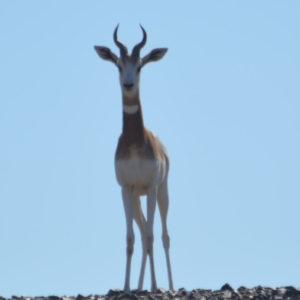
Saving the last dama gazelles
Once widespread throughout the Sahel, the dama gazelle is one of the planet’s most endangered species, with fewer than 200 remaining individuals remaining in the wild.
What are we doing to save dama gazelles?
From two decades of survey and monitoring data, our understanding of dama gazelles and their environments in Niger and Chad has helped inform a global strategy for the conservation of this critically endangered species.
In the process, we facilitated studies on the genetic diversity of dama gazelles, providing specific recommendations for managing focal populations.

In Niger, our efforts are focused on the long-term monitoring and protection of dama gazelles with irreplaceable genetic value inhabiting Mount Takolokouzet, in the Aïr & Ténéré National Natural Reserve (RNNAT). This includes routine surveillance and initiatives with the RNNAT Protected Area Management Unit and local communities to safeguard wildlife.
In 2023, we recorded the highest number of dama gazelles seen in the area since our monitoring began.


Because of the imminent risk of local extinction, we translocated three dama gazelles from the Manga region of Chad to the Ouadi Rimé – Ouadi Achim Faunal Reserve to begin an in situ breeding program in 2020. They were joined by five animals from the reserve that were naturally attracted to enter the protected breeding enclosure to join the Manga group, while five captive bred dama gazelles were contributed by the Environment Agency Abu Dhabi.


In 2024, a trial group of three satellite-collared animals was released into the reserve and soon integrated with the wild population.
By the start of 2025, there were 32 dama gazelles in the breeding center.

The future of the dama gazelle relies heavily on safeguarding and growing these populations in Niger and Chad which will continue to be a high priority over the coming years. We are cautiously optimistic with the results.
Our partners


















